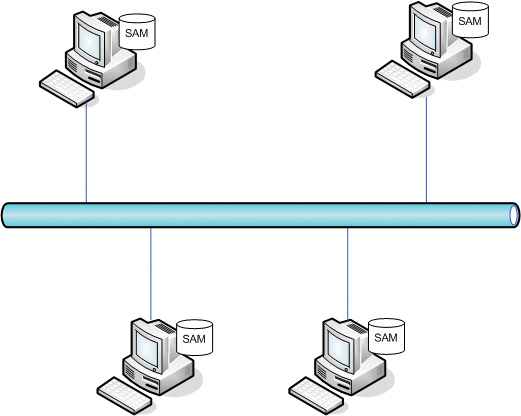User Management
Network Integration
Peer-to-Peer Networks
- A peer-to-peer network (or workgroup) consists of multiple Windows computers that share information. No computer on the network serves as a central authoritative source of user information. Each computer maintains a separate list of users and groups in its own SAM database.
- Peer-to-peer networks are most commonly implemented in homes and small offices. Windows 7 has a limit of 20 connections.
- To access shares or printers on a remote computer, you must log on as a user that exists on the remote computer. In most cases, it is preferred that the remote computer has a user account with the exact same name and password as the local machine. This allows pass-through authentication to occur, where the local Windows credentials are used to log on to the remote computer.
- Pass-through authentication as the simplest authentication method for users. However, managing the user accounts and passwords on each computer is difficult. With pass-through, a remote computer has a user account with the exact same name and password as the local machine.
- There is no automated mechanism to synchronize user accounts and passwords between computers in a peer-to-peer network. As a consequence, security management for peer-to-peer networks is progressively more difficult as the number of computers expands.

http://www.computerworld.com/s/article/69883/Peer_to_Peer_Network.